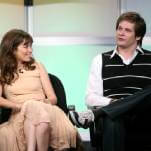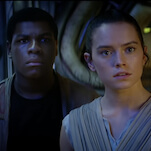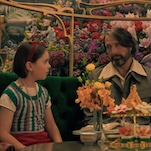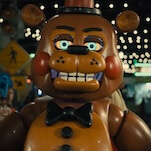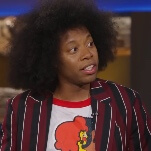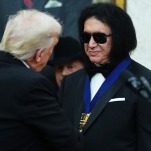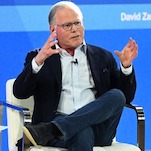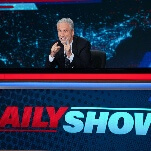Cultural Infamy: Bad Boys’ cultural infamy is rooted in its status as the film that introduced moviegoers to an alpha-male commercial/music-video/Playboy Video Centerfold: Kerri Kendall director named Michael Bay. It was the beginning of a one-man cinematic tidal wave that would consume pop culture, a shiny, shooty, blow-uppy, cleavage-rich cinema of excess that wears its snotty adolescent ‘tude proudly, and sneers at the notion that movies should be anything other than a sleek delivery system for explosions, shootouts, profanity, sexy girls, and cool guys.
Bad Boys wasn’t eviscerated by critics, but its 42 freshness score on Rotten Tomatoes is certainly nothing to brag about, and the film’s fidelity to buddy-cop movie clichés did not go unnoticed. The Washington Post’s Desson Thomson quipped, “Even by the low-low standards of cheap action flicks, this one's bad, boys.” (Wordplay!) Not to be out-quipped, Thomson’s Post colleague Rita Kempley retorted, “Bad Boys is relentless formulaic fodder for the explosion-starved; it's loud, shallow, sexist, and a complete waste of time. But this buddy-cop thriller is not without its problems.”
Curiosity factor: Bad Boys and Bad Boys II are the only two Michael Bay films I previously hadn’t seen. Bad Boys pre-dated my movie-critic days—it came out in 1995, and I didn’t start writing for The A.V. Club until ’97—and I feared Bad Boys II would be so dense with allusions to its predecessor that it’d be incomprehensible to newcomers. I don’t see Bay movies because I like them; I see them because they’re important culturally. They’re the top-grossing, most advertised, highest-budgeted, most ubiquitous cinematic monsters around, and I feel obligated to see his films so I can be part of the cultural conversation as to whether they’re worse than Hitler, or so mind-blowingly awesome that only Kafka-reading, beret-wearing performance-art enthusiasts don’t like them. Also, they feature killer asteroids, stuff going boom real loud, killer robots that turn into cool cars, cool cars that don’t turn into killer robots, neat character actors (Kevin Corrigan and Michael Imperioli pop up here), Megan Fox’s ass, and all sorts of other things that are a lot of fun in the hands of people who aren’t Michael Bay or Jerry Bruckheimer.
Besides, at the risk of being controversial, I have long found Will Smith likeable and engaging. I thought it’d be interesting to see hip-hop’s Mr. Clean cursing up a storm in a gleefully profane cop movie. Add it up, and you have an adrenaline-fueled, nonstop thrill ride, right?
The viewing experience: Bad Boys opens with a sequence that doubles as a statement of purpose. In it, Will Smith and Martin Lawrence tool down the road in a glistening metal phallus of a Porsche 911 (on loan from Bay, no less) while bickering like an old married couple. After they pull over, a trio of baddies accosts them: a femme fatale in a tiny dress with her cleavage pushed heavenward (“titty titty, strut, strut” are her boss’ instructions), a big black dude (“Let’s gank these fools” is his key line), and the gun-toting creep masterminding the whole operation.
It runs a little over three and a half minutes, but already, every hallmark of Bay’s oeuvre is present. There’s macho guy talk, enough testosterone to poison a stable, flashy editing, a sports car, broad humor, staccato bursts of violence, women being treated both as sexless domestic nags and anonymous malevolent sexpots, and profanity used to punctuate every single sentence. Individually, Bay’s images are beautiful. Collectively, they’re headache-inducing. It’s exactly like every mismatched-buddy-cop movie ever, only more so. In lieu of originality and wit, we get an unsavory stew of lovingly recycled clichés.
As that clip perhaps conveys, Will Smith and Martin Lawrence are partners. But here’s the crazy part: they’re mismatched partners! And bestest buddies! Smith plays a Will Smith-like smoothie; Lawrence plays a Martin Lawrence-like cut-up. They might just end up solving the case. That is, if they don’t kill each other in the process!
From this rich central dynamic, all manner of hilarity springs. Smith is fastidious about the upkeep of his expensive sports car. Lawrence is a slob who gets his messy hamburger all over its glistening interior! How will they ever be able to work together? My curiosity was piqued! Incidentally, since I’m writing about Michael Bay, I feel it is only appropriate to use as many exclamation points as possible, in a futile attempt to convey the mind-bogglingly extreme and in-your-face nature of Bay’s work. Whose face is Bay in? Mine. Yours. Society’s.
This first scene serves notice that audiences are about to be assaulted by all the hackneyed shit they’ve seen before, only louder, faster, and shinier. After a heist sequence in which Tcheky Karyo and his henchman steal $100 million worth of heroin from police storage, we meet Smith and Lawrence’s superior, Joe Pantoliano. Pantoliano is a short-tempered, cigar-chomping screaming enthusiast who rides the guys pretty hard, but would ride them a lot harder if they didn’t get results with their rules-flouting ways.
But who are these young men? Why is Smith able to drive such a nice car in spite of his modest detective’s salary? This is where our old friend exposition comes in. In this scene, Smith defends his trust-fund-baby status and hints at the talent that would eventually lead to multiple Oscar nominations when he manages to say the line “I get up early and I take it to the max every day!” without giggling uproariously. (I, on the other hand, get up around 9 and take it to the middle once or twice a week, if I’m feeling up to it.)
Smith and Lawrence track down the legs of Téa Leoni, and to a much lesser extent, the rest of her body. She’s the only one who can lead them to Karyo. Bad Boys was originally designed as a vehicle for Saturday Night Live funnymen Dana Carvey and Jon Lovitz, before it was rewritten extensively for Arsenio Hall and Martin Lawrence. Then, according to Hollywood lore (and the IMDB), Bay spotted Smith on The Fresh Prince Of Bel-Air and decided he’d be perfect for the role of a suave womanizing cop.
Some echoes of the original incarnation of the film can be found in the endless “comic” scenes where Lawrence, for reasons far too stupid to go into, spends much of the film pretending to be Smith for Leoni’s benefit. To paraphrase The Onion’s great line about the comic stylings of George Lucas, Bay has a sense of humor audiences have grown to know and tolerate.
This labored sitcom shtick serves two purposes: It eats up screentime between chases and explosions, and it’s cheap. By Michael Bay/Jerry Bruckheimer standards, Bad Boys is practically a micro-indie. To give Bay credit, it looks like it cost twice as much as its modest $23 million budget. Lawrence and Smith were far from the mega-stars they’d become, and Bay was a first-timer who really made the most of his relatively limited resources.
Leoni makes the most of a thankless role and her short, short skirts. She’s playing a hooker, but she’s the smartest person in the movie, and the only real adult. There’s a nice moment late in the film when a henchman eyeballs her lasciviously and leers, “I’d scratch whatever you want me to, you blue-eyed bitch,” and she deadpans, “Did you go to college?”
For a film with a hooker, a playboy, and a hapless married man who never stops talking about his sex life, Bad Boys has no real interest in sex; Smith plays a stud whose life is a nonstop fuckfest, yet he cuts a strangely sexless figure. He’s never in danger of having sex with anyone, anytime; even his relationship with Leone is rigidly platonic. The only real sexual tension is between him and Lawrence. It’s telling that the film ends with them professing their (platonic) love for each other.
Part of what attracted me to Bad Boys is the central role it plays in Edgar Wright’s wonderful homage/genre riff Hot Fuzz. As it races to a close, Bad Boys sometimes succeeds through giddy excess, gleefully embracing self-parody in shots where Smith screams orgasmically while firing his gun and spends roughly an hour running in slow-motion with his shirt off, his muscles glistening in the hot Florida sun as Bay’s camera lingers on him fetishistically.
I also enjoyed the slow-motion-crazy John Woo For Dummies climax where Smith and Lawrence shoot it out with the bad guys in what appears to be an explosion factory. At the risk of damning Bad Boys with very faint praise, it’s one of Bay’s best movies, if only because it has the decency to wrap things up in under two hours. Its 2003 sequel was a half-hour longer.
That said, it also includes scenes like the following, a toxic combination of gun worship, tough-guy posturing, broad comedy, and offensive ethnic stereotyping. It would be a stretch to call Bad Boys “good,” but it’s less terrible than almost all Bay’s other movies. And, it should be noted, and not in a pervy way or anything, that Leoni does indeed have lovely legs. Bad Boys wasn’t the film that made me stop worrying and love Michael Bay, but I understand a little better where some of his apologists are coming from.
How much of the experience wasn’t a total waste of time? I’m going to be generous and say 25 percent. It’s stupid and clichéd about 75 percent of the time, and transcendently stupid and clichéd the other 25 percent. For Bay and Bruck, that ain’t bad.






























